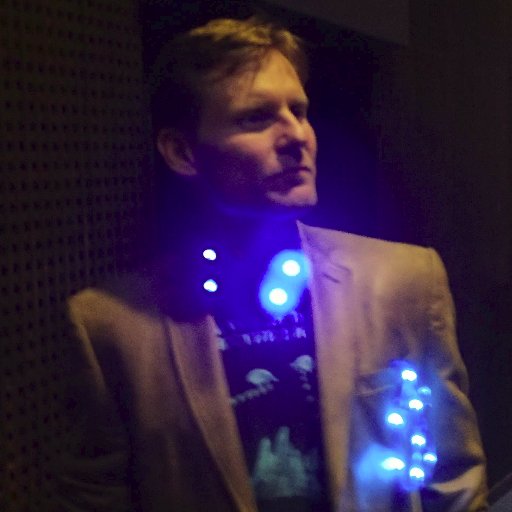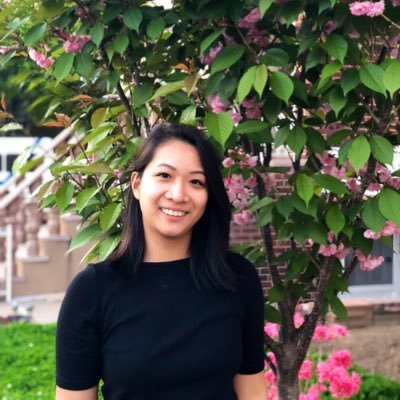
Todd Oakley
@UCSB_OakleyLab
Followers
3K
Following
3K
Media
463
Statuses
6K
Todd Oakley at UCSB studies the evolutionary origins of complexity - esp visual systems and bioluminescence in invertebrates. mastodon: @[email protected]
UCSB
Joined January 2011
One of my favorite things about studying these amazing creatures is telling the world about them. This article goes a long way toward capturing the wonder and awe!
science.org
These tiny crustaceans turned a defense mechanism into a mating strategy akin to summer’s lightning bugs
0
11
39
I think the link was not quite right for the paper: https://t.co/kdQ2g2EjTo
academic.oup.com
AbstractBackground. Predicting phenotypes from genetic variation is foundational for fields as diverse as bioengineering and global change biology, highlig
0
1
2
Seth is also developing a tool called Opsin Phenotyping Tool for Inferring Color Sensitivity (OPTICS), where you just plug in an opsin and predict its lambda max. If you want to try it, get in touch. In this figure from OPTICS, I predicted lambda max of a box jellyfish opsin
0
0
1
Invertebrates have far less data, so those opsins are not as well predicted. But we are working on adding data from physiology, like MSP (microspectrophotometry) and ERG (electroretinograms) that we can link with specific opsin genes
1
0
1
Especially for vertebrates, where there is A LOT of data, we can very accurately predict phenotypes from sequences alone with machine learning models trained on all the data. We even looked at cases of epistasis, and I was surprised how well the predictions can do
1
0
0
A histogram of all the opsins and their lambda-max phenotypes is Figure 1:
1
0
0
The real heavy lifting was to create a database of essentially ALL heterologously expressed opsin genes and their lambda-max (color) phenotypes. We call the database VPOD (visual physiology opsin database)
1
0
0
I am thrilled to announce publication of a new paper led by Seth Frazer, showing we can accurately predict opsin phenotypes from their gene sequences https://t.co/cJtuRApNEO...
academic.oup.com
Co-published with BGI, GigaScience is an open access and open-data journal that aims to revolutionize reproducibility of analyses, data dissemination, organization, understanding, and use in the...
2
11
37
Excited to co-organize this @APSphysics MM session with @maziyarj & invited speakers @ShengqiangCai + @UCSB_OakleyLab ⚡️ … to explore how light shapes life and how life creates & uses light to sustain itself! If this sounds like your research, submit your abstract & join us!
With @oritpeleg we are organising an @ApsDbio focus session “On Light & Life” from energy capture and light production to bio-inspired metamaterial design and more. Submission deadline is Oct 25 Please help us spread the word and join us in California next March :)
2
10
39
By linking bioluminescence to ancient secretory pathways, we’re broadening the scope of how species use partly conserved yet simultaneously diverse secreted products in ecological interactions
0
0
1
This supports what we call the "legacy-plus-innovation" model, where new evolutionary innovations merge with older, conserved pathways. Bioluminescence is not just a light show—in part it uses an ancient evolutionary toolbox used for survival and communication
1
0
0
In Vargula tsujii, we found c-luciferse, which drives light production, is co-expressed with ancient genes linked to toxin production and high-output protein secretion. 🦐💡 Could this explain why they’re spat out by fish? 🤔 #EvoDevo
1
0
0
Bioluminescence evolved many times across the tree of life, influencing predator-prey dynamics and even courtship. We wondered if conserved secretory genes might play a role in creating these light displays in ostracods
1
0
1
The gif in the thread is video of a fish spitting out an ostracod! In the new paper, we found genes similar to venom genes. It seems possible that ostracod bioluminescent secretions could be distasteful or even toxic, similar to fireflies.
1
1
0
Congratulations to @LisaMesrop and other co-authors on a new publication in @OfficialSMBE ! We explore how ancient secretory pathways contributed to the evolution of bioluminescence in ostracods. LINK: https://t.co/f2iQLkC5Tk
#Bioluminescence #Evolution
1
11
39
New preprint with @UCSB_OakleyLab @niko_hensley @JeroDelr et al. on the molecular evolution of bioluminescence in brittle stars!
Functional characterization of luciferase in a brittle star indicates parallel evolution influenced by genomic availability of ... https://t.co/eMFRRGiwDW
#biorxiv_evobio
2
7
33
How many paths lead to evolutionary innovation? How versatile are genomic toolkits? Excited to announce my new preprint addressing these questions in collaboration with @RokasLab, @HittingerLab, and @mwpen (link at the end)
2
35
92
MS student Seth is a little worried his poster is out in a dark corner #SMBE2024 . If you are interested in using Machine Learning to link genotype and phenotype, head to the dark side! Also preprint!
biorxiv.org
Background Predicting phenotypes from genetic variation is foundational for fields as diverse as bioengineering and global change biology, highlighting the importance of efficient methods to predict...
1
6
8










